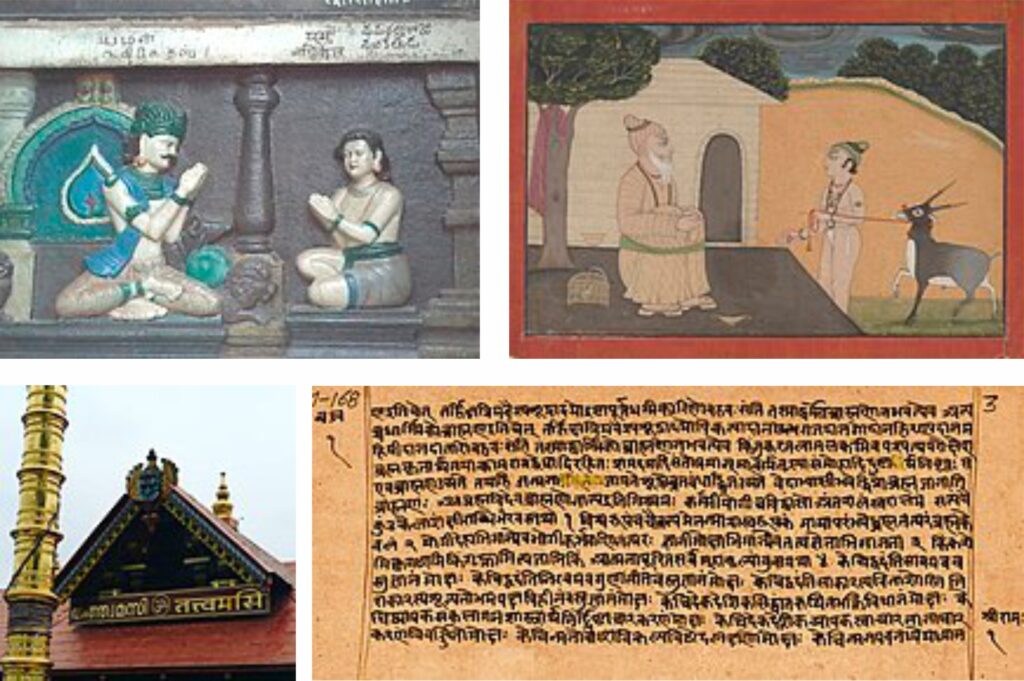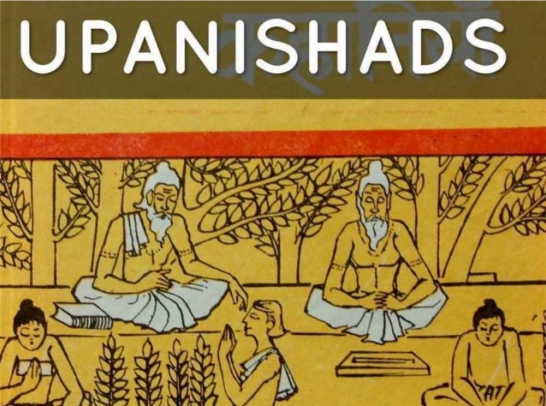![]()
The Upanishads, often referred to as the philosophical and spiritual treasures of Hinduism, are ancient texts that delve deep into the mysteries of existence, consciousness, and the eternal quest for knowledge. These profound works provide a window into the core beliefs of Sanatan Dharma, also known as Hinduism, offering insights into the spiritual and philosophical dimensions that have shaped this timeless tradition. In this article, we will explore what the Upanishads are, their significance, and how they differ from the Vedas.
What Are the Upanishads?
The Upanishads, originating in ancient India between 700 BCE and 300 BCE, are a collection of philosophical and spiritual texts composed in Sanskrit. They are revered as the concluding part of the Vedic literature and are sometimes referred to as Vedanta, which literally means “the end of the Veda.” This name is fitting because the Upanishads mark the culmination of the Vedic revelation, addressing profound questions about the nature of being, the self, life’s purpose, and the path to enlightenment.
Key Themes in the Upanishads
The Upanishads tackle fundamental philosophical concepts that continue to shape the worldview of not only Hindus but also those interested in spirituality and philosophy around the world. Some key themes include:
- Brahman and Atman: The Upanishads introduce the concept of Brahman, the ultimate reality that underlies and encompasses the entire universe. They also explore the Atman, the individual self, and reveal their inseparable connection. This connection forms the basis for understanding the unity of all existence.
- Karma and Reincarnation: These texts discuss the law of karma, which suggests that one’s actions have consequences that can affect future lifetimes. Reincarnation is seen as a way for the soul to continue its journey towards self-realization and liberation.
- Moksha: The Upanishads emphasize the pursuit of Moksha, often translated as “enlightenment” or “liberation.” It represents the ultimate goal of life – the realization of one’s true nature and union with Brahman.
Differences Between Vedas and Upanishads
While the Vedas and Upanishads are both foundational to Hinduism, they differ in several significant ways:
- Purpose and Content: The Vedas primarily focus on ritual details, ceremonies, and mantras used in religious practices. In contrast, the Upanishads delve into the realm of philosophy and spirituality, exploring profound questions about existence and consciousness.
- Chronology: The Vedas are older, dating from around 1200 to 400 BCE, while the Upanishads were composed between 700 and 400 BCE. The Upanishads are seen as the conclusion of the Vedic period.
- Number and Attribution: There are four Vedas (Rigveda, Samaveda, Yajurveda, and Atharvaveda) and each contains multiple texts. In contrast, there are approximately 200 Upanishads, with each linked to a specific Veda. Some Upanishads are attributed to specific sages, while others are unattributed.
- Focus: The Vedas emphasize ritual observance and one’s role in the cosmos, while the Upanishads focus on spiritual enlightenment, the relationship between the individual and the divine, and the path to liberation.

A guru teaches a disciple, giving rise to the etymology of the term “Upanishad” Yama teaches Nachiketa in the Katha Upanishad, A manuscript of the minor Vajrasuchi Upanishad. The Upanishadic phrase “Tat Tvam Asi” displayed at the Sabarimala temple in Kerala.
The Upanishads hold a unique and revered place in the spiritual and philosophical landscape of India and the world. These ancient texts have not only shaped the core beliefs of Hinduism but have also influenced the development of other Indian philosophies like Buddhism, Jainism, and Sikhism. They continue to inspire seekers of truth and provide profound insights into the nature of existence, the self, and the eternal quest for knowledge and liberation. Understanding the Upanishads is essential for comprehending the rich tapestry of Indian history, culture, and spirituality.
Reference:







